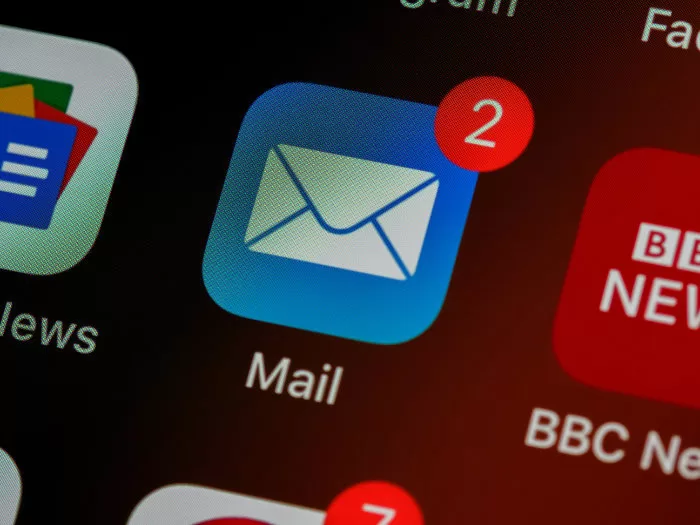How To Write a Great Cold Marketing Email That Gets a Response (With Examples)
Updated on August 26, 2023 by Tim Donahue
Engage Your Reader, Use a Hook In Your Subject Line, Provide Value In Your Marketing Emails

Writing effective marketing emails can be the gateway to success for many small businesses. In this guide, you’ll learn how to write a marketing email that not only captures attention but also compels action. Let’s go over these things one at at time to help you get replies to your cold marketing emails:
Table of Contents
- Understanding Your Target Audience: Who Are They, and What Do They Need?
- Crafting the Perfect Subject Line: Your First Impression Counts!
- Opening Lines That Engage: How to Grab Attention from the Get-Go.
- Personalization Techniques: Making Your Email Feel Tailored, Not Generic.
- The Art of Persuasion: Building Interest Through Benefits and Value.
- Clear Calls to Action (CTAs): What Do You Want the Reader to Do Next?
- Visual Enhancements: Using Formatting and Imagery to Enhance Appeal.
- Examples of Successful Cold Emails: What Worked and Why It Worked.
- A/B Testing: Knowing Good Emails From Bad Ones
- Common Mistakes to Avoid: Pitfalls That Can Sink Your Email.
- Testing and Measuring Success: How to Refine Your Approach for Better Results.
Understanding Your Target Audience: Who Are They, and What Do They Need?
Knowing your audience isn’t just about demographics. It’s about diving deep into their interests, their needs, and what keeps them up at night. Are they new parents, tech-savvy teenagers, or busy executives? Understanding this will help you craft an email that resonates with them.
For example, if you’re targeting small business owners, focus on how your product or service saves time and money. Utilize tools like Google Analytics to better understand your audience’s behavior and preferences.
Tip: Creating personas can help you visualize your audience. Think about who they are, what they do, and what problems they face that your business can solve.
Crafting the Perfect Subject Line: Your First Impression Counts!
The subject line is like the handshake of an email; it needs to be strong and confident. It must draw your readers in and give them a reason to open your email.
For example, if you’re promoting a new eBook, instead of a bland “New eBook Available,” try “Unlock Success with Our New Growth Guide!” This invites curiosity and suggests a benefit.
Remember, your subject line should be relevant and clear, and never appear spammy. A/B testing different subject lines can provide insights into what works best with your audience.
Opening Lines That Engage: How to Grab Attention from the Get-Go.
The first few lines of your email are the hook. Start with something that engages your reader’s curiosity. This can be a surprising fact, an intriguing question, or a bold statement.
For instance, “Did you know 90% of startups fail within the first five years?” immediately grabs attention, especially if your product or service can help avoid that fate.
Keep the tone friendly and conversational. Imagine you’re chatting with a friend over coffee about your business. That’s the vibe you want to capture.
Personalization Techniques: Making Your Email Feel Tailored, Not Generic.
Personalization goes beyond just adding the recipient’s name. It’s about making the email relevant to them. Segmenting your email list based on interests, past purchases, or engagement can help you send the right message to the right person.
If they recently bought a beginner’s guide from your site, for example, a follow-up email might offer a more advanced resource. Platforms like Mailchimp can automate this personalization process.
Remember, a personalized email feels like a conversation, not a sales pitch. It builds trust and engagement with your brand.
The Art of Persuasion: Building Interest Through Benefits and Value.
Your readers are always thinking, “What’s in it for me?” So tell them! Instead of listing features, focus on the benefits your product or service provides.
If you’re selling an online course, highlight how it will help them grow their business or improve a specific skill, and support your claims with testimonials or success stories.
Utilize persuasive language and appeal to both logic and emotion. Show them why they need what you’re offering, and guide them toward realizing it themselves.
Clear Calls to Action (CTAs): What Do You Want the Reader to Do Next?
Every email needs a clear and compelling call to action. This is where you guide your readers to the next step, whether it’s making a purchase, signing up for a webinar, or reading a blog post.
Your CTA should be easy to find and understand. Use buttons or bold hyperlinked text that stands out. For example, a bright “Learn More” button that leads to your product page can be highly effective.
Always make sure the linked page aligns with your CTA. If you’re promising a free guide, make sure that’s exactly what they’ll find when they click through.
Visual Enhancements: Using Formatting and Imagery to Enhance Appeal.
Visuals aren’t just about looking pretty; they help to convey your message. If you’re talking about a complex process, a simple infographic can make it easier to understand. Images should always support and enhance your content.
Formatting tools like bullets, subheadings, and bold text can highlight key points and make your email more scannable. Just as a well-plated meal is more appetizing, an aesthetically pleasing email is more engaging.
Keep in mind that many people will read your email on mobile, so ensure it’s responsive and looks good on various devices.
Examples of Successful Cold Emails: What Worked and Why It Worked.
An effective marketing email isn’t about templates; it’s about connecting with the reader. Let’s look at two examples:
Example 1:
Subject: “Struggling with Marketing? We’ve Been There!”
Body: “Hi [Name], I saw your post about marketing challenges, and it struck a chord.We faced the same issues until we developed our unique strategy.
Could this be what your business needs?
In the first month, we increased our leads by 20%. If you’re curious how we did it, let’s chat.
Thanks,
[Your Name, Email, Phone]”
Example 2:
Subject: “Ready for a Business Breakthrough, [Name]?”
Body: “Hey [Name], I noticed your company’s success in the local market.It’s impressive, but why stop there?
Our insights have helped similar businesses like yours expand nationally. If you’re ready to take that leap, I’m here to help.
Check out our case studies and ping me back, I’ll help you with any questions or get you started!
Thanks,
[Your Name, Email, Phone]”
These examples show personal, engaging, and concise content. They don’t just talk about a product; they address a specific need and offer a solution.
A/B Testing: Knowing Good Emails From Bad Ones
A/B testing is like having a friendly duel between two versions of your email to see which one wins your audience’s hearts.
You send two variations (let’s call them A and B) of the same email to your list. One email might have a different subject line, or a unique call to action than the other. You only change ONE thing. Send email A to half your list and email B to the other half of your list. Then you sit back and watch the magic unfold.
Which email gets more opens? More clicks?
By comparing the performance of the two, you’ll get to know what resonates with your audience. Tools like Mailchimp make this a breeze, guiding you through the process, and automating the sending of the ‘winning’ email to the rest of your list.
After you’ve done this, you begin to learn what kinds of subjects and email formats and words and value propositions work best. Eventually you’re crushing it on all levels, because you’ve adequately tested many variations with your list and perhaps other audiences.
It’s like having a crystal ball for your email campaigns, and it can be a real game-changer in understanding what works and what doesn’t.
Common Mistakes to Avoid: Pitfalls That Can Sink Your Email.
Avoiding common mistakes can elevate your email from good to great. Don’t overdo it with jargon or make it too lengthy. Keep the focus on the reader, not on yourself or your company.
Also, avoid sending emails without testing them on different devices and email platforms. Broken links or poorly formatted emails can ruin a reader’s experience.
Most importantly, always ensure that your email complies with legal regulations such as the CAN-SPAM Act. Non-compliance can lead to fines and damage your reputation.
Measuring and Improving: Keep an Eye on the Metrics That Matter.
Email marketing isn’t a “set it and forget it” game. You need to keep an eye on the metrics to understand what’s working and what’s not. This includes open rates, click-through rates, and conversion rates. Are your recipients opening the email but not clicking through? It’s time to reevaluate.
Tools like HubSpot can assist in tracking these metrics. They can help identify areas for improvement and let you see what resonates with your audience.
Don’t be afraid to experiment and refine your approach. Email marketing is an evolving process. Stay agile, and keep learning for optimal results.
There you have it! A comprehensive guide on crafting emails that get results. With understanding, creativity, and attention to detail, you’ll be well on your way to mastering the art of email marketing. Keep writing, keep testing, and keep growing!

Tim Donahue
StartABusiness.Center
Updated on August 26, 2023